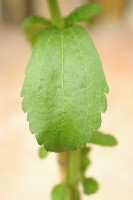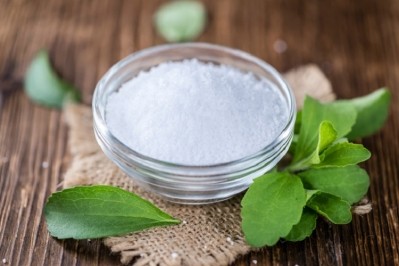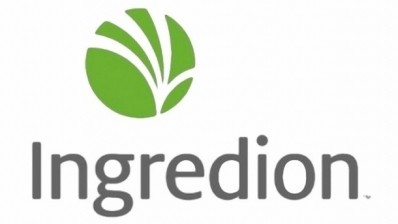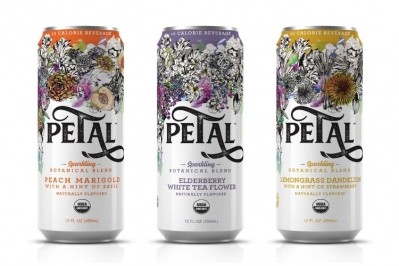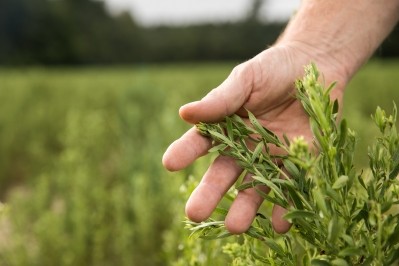‘The stevia story has changed!’ PureCircle on the evolution of the natural sweetener
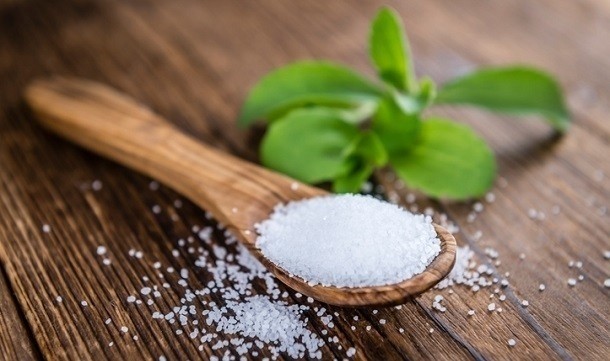
Headquartered in Chicago, PureCircle researches and develops stevia sweeteners. Its work includes improving the taste, mouthfeel and calorie profile, as well as addressing cost effectiveness. Founded in 2002, it has nearly 400 patents and patents pending covering proprietary stevia technology.
400 times sweeter than sugar
Stevia’s key advantages are its zero calorie status and its natural credentials. Problems with an ‘aftertaste’, however, had followed the sweetener for years: and it is often combined with sugar or other sweeteners to address this.
The stevia plant is native to South America, and has been cultivated there for hundreds of years. Today, it is grown around the world, notably in Kenya, China and the US.
Stevia is up to 400 times sweeter than sugar; and proponents argue that this high intensity means it requires less water and land to grow than sugar.
Major global regulatory organisations, across 65 countries, have approved the use of high-purity stevia leaf extracts in food and beverages.
Today, the industry is about developing a range of stevia sweeteners with PureCircle holding some 400 patents and patents pending.
“The story of stevia has changed significantly in the past few years,” PureCircle CEO Maga Malsagov told this publication. “Not long ago, stevia was viewed as a plant-based, zero-calorie, single-ingredient sweetener which worked well in some beverage and food applications.
“Today we offer a range of new generation stevia leaf sweetener ingredients, including Reb M, with sugar-like taste and zero calories.”
Starleaf
Last year the company increased its capacity to supply Reb M, a variant which is obtained from a proprietary strain of the stevia plant called Starleaf. Starleaf stevia plants contain more Reb M than conventional stevia plants, and PureCircle has ‘massively ramped up’ planting of this variety.
This is significant because previously, Reb M had only been available in small amounts in conventional stevia plants.
It is this kind of development that is driving the stevia industry forward, says Malsagov.
“Recent PureCircle advances enable us to significantly boost production of high-grade stevia sweeteners – like Reb M and Reb D — which have the most sugar-like taste and are highly sought after by beverage and food companies,” he continued.
“That means we can supply stevia sweeteners in amounts that customers need as they expand use of stevia ingredients – and we can do it cost effectively for them.”
The use of stevia has broadened out as the sweetener has been developed. “Our new generation stevia leaf sweeteners like Reb M work well in a wide range of beverage and food products. Stevia use is growing, and we are seeing stevia used in products ranging from ready-to-drink beverages to ice cream to baked goods to drinkable yogurts just to name a few.”
‘New generations can innovate without any taste compromise’
The issue of an ‘aftertaste’ associated with stevia has plagued the industry for many years. But Malsagov says today there are ‘no taste trade-offs or compromises’ with the sweetener.
“Today when we talk about beverages and foods sweetened with our new generation stevia sweeteners, we are talking about great tasting products – products which taste as good as their full sugar counterparts, but without the calories," he said.
“Aftertaste or linger was a characteristic of the early stevia leaf ingredients when used in some, but not all, beverage and food products. Today, food and beverage companies using our new generation stevia leaf sweeteners can formulate and innovate without any taste compromise."
While a number of companies have turned to stevia in their drinks, others have turned away from the sweetener.
In the UK Coca-Cola’s Sprite started using a stevia/sugar blend in 2013 – only to switch out the sweetener last year (using stevia had reduced the sugar content to 6.6g sugar per 100ml, whereas replacing the sweetener with a combination of sugar, acesulfame K and aspartame saw sugar levels drop to 3.3g and thus escape the UK’s sugar tax).
On the other hand, however, it has developed a Coca-Cola using stevia as its sole sweetener: Coca-Cola Stevia No Sugar was launched in New Zealand last May.
With such a mix in take-up, critics can argue that stevia hasn’t been the silver bullet people once hoped it would be. But Malsagov counters that stevia is constantly changing.
“The stevia story has changed,” he said. “ The stevia of today is not the stevia of ten years ago. Our new generation stevia sweeteners have great taste - and no taste compromises. We believe the current rate of growth of products launched with stevia will accelerate.
“In addition, our advances with stevia have enabled us to ramp up production and become more cost friendly for beverage and food companies.”
Pictures: getty/handmadepictures; medinamedina
